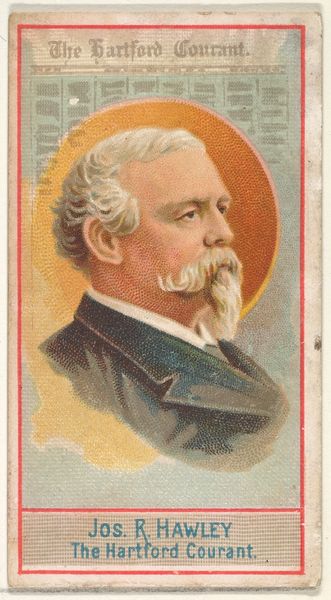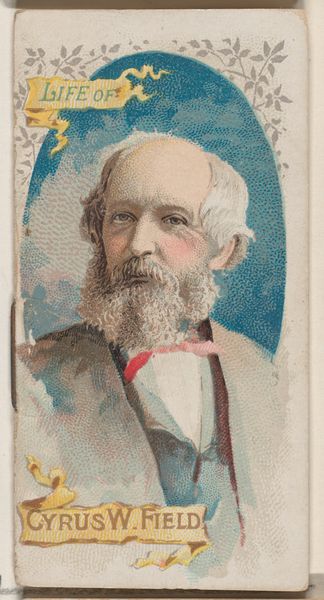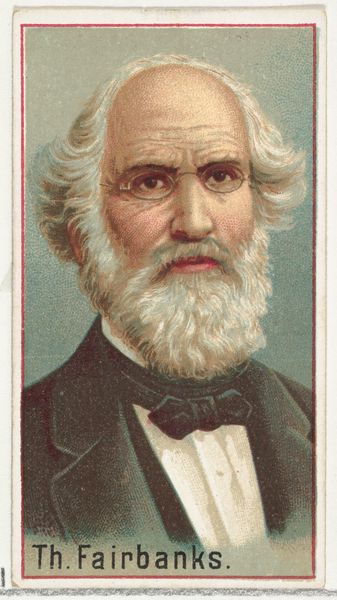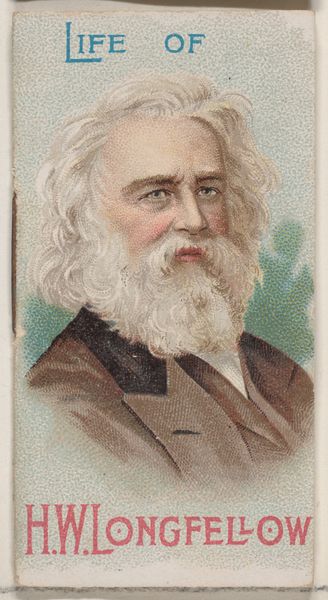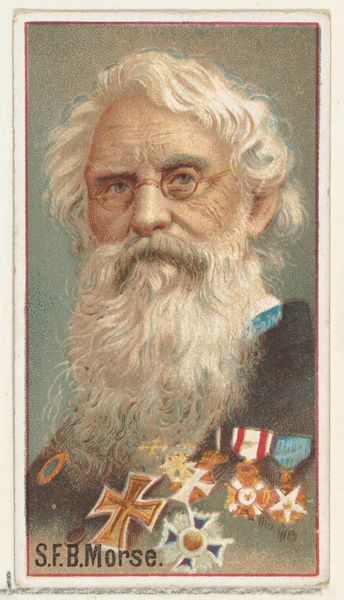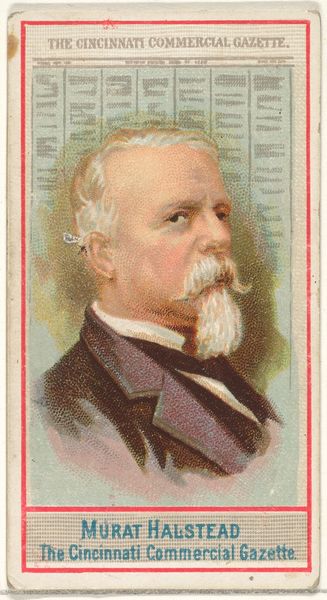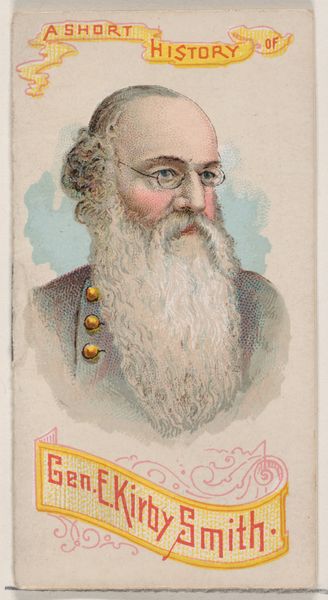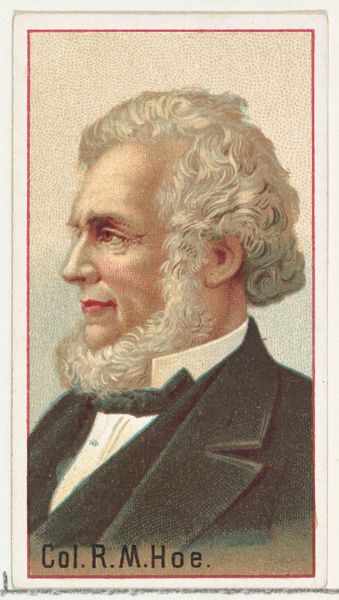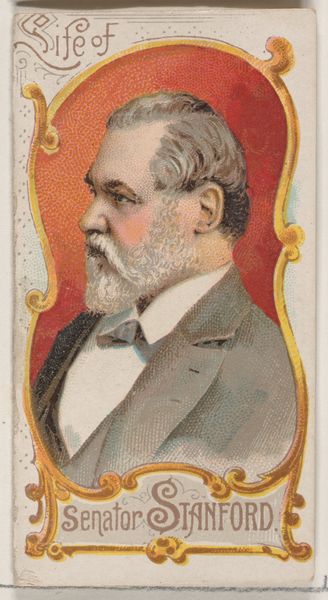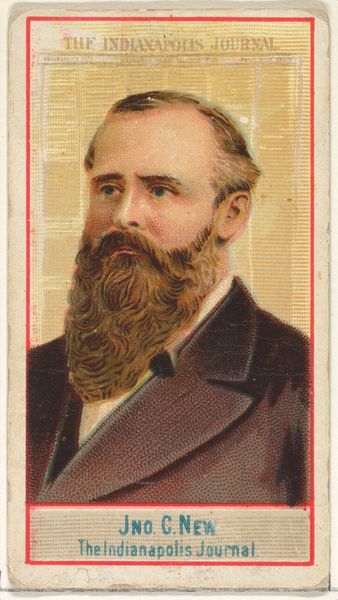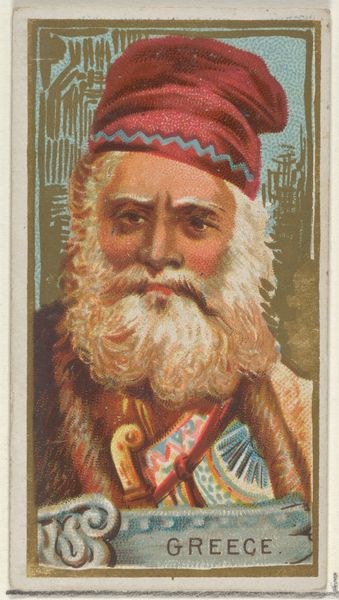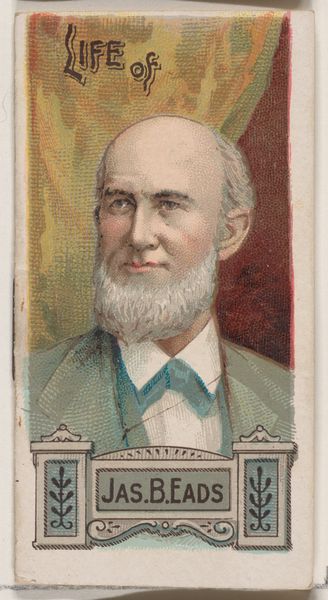
Henry Wadsworth Longfellow, from the series Great Americans (N76) for Duke brand cigarettes 1888
0:00
0:00
drawing, print
#
portrait
#
drawing
#
16_19th-century
# print
#
figuration
#
history-painting
#
academic-art
Dimensions: Sheet: 2 3/4 × 1 1/2 in. (7 × 3.8 cm)
Copyright: Public Domain
Curator: This is an 1888 print of Henry Wadsworth Longfellow, from the series Great Americans, originally created as a cigarette card for the Duke brand. Editor: My first impression is that it feels strangely reverential, given its commercial origin. It’s almost like a little icon, or a holy card. Curator: Interesting observation! As a cigarette card, mass-produced by W. Duke, Sons & Co., the piece provides insights into how commercial imagery was intertwined with celebrity and cultural values at the time. The material, thin cardstock, reveals an intention for widespread circulation. Editor: Right, the imagery itself reinforces a sense of veneration. The way Longfellow is framed by what looks like a book with "Excelsior" and "Evangeline" inscribed, plus the laurel leaves—it's all designed to evoke classicism and literary achievement. The feather at the top continues to play with a writing motif. He's presented almost like a saint with his attributes. Curator: Precisely, his likeness is essentially commodified, transformed into a token to promote tobacco sales. This raises questions of accessibility and consumption: were Longfellow's poems becoming more accessible because of such ephemera, or was his image simply another commodity, drained of its artistic significance? The production process—likely lithography—allowed for a standardized image at a minimal cost. Editor: And yet, think of what Longfellow meant to the collective American consciousness. Poems like "The Song of Hiawatha" shaped national identity. Seeing him framed as literature, elevated by those classicizing symbols, the cigarette card taps into a desire for cultural capital. This links back to your point about the material. This simple image might give smokers the sense of engaging with American greatness! Curator: An odd juxtaposition indeed, as if purchasing cigarettes was an act of participating in high culture. This little print offers us a lot to consider about the intersection of commerce, culture, and the construction of national identity. Editor: Definitely. It reminds me that images, no matter how humble their origins, are potent carriers of meaning, shaping our perceptions and memories across time.
Comments
No comments
Be the first to comment and join the conversation on the ultimate creative platform.

